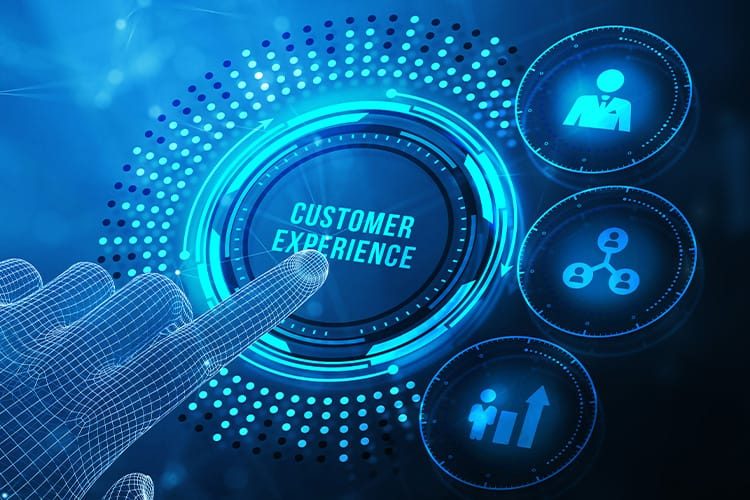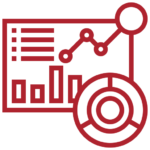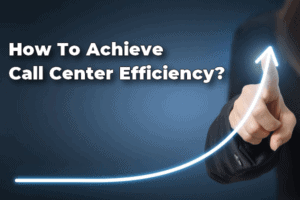Customer demands are ever-changing and more often than not, they become more and more difficult to keep up with for a lot of businesses. Customers today expect seamless and personalized interactions across all touch points. Disjointed experiences not only frustrate customers but also hinder businesses from nurturing loyalty and trust. To address and overcome this challenge, many companies have started embracing Unified Customer Experience Management (Unified CXM). CXM has completely revolutionized how brands engage with their customers.
Introducing Unified Customer Experience Management (Unified CXM)
Unified CXM is the practice of creating seamless and personalized experiences for customers across all support and marketing channels. It leverages a centralized data source to provide consistent interactions throughout the customer journey. By breaking down silos and integrating data from various touchpoints, Unified CXM enables businesses to meet customers where they are and anticipate their needs effectively.
Table of Contents
What is Unified Customer Experience Management?
Unified CXM involves building, analyzing, and maintaining a cohesive branding strategy and seamless customer experience across all touch points of an omnichannel customer journey. It ensures consistency in content, purpose, and branding across online, in-store, phone, and other engagement channels.
- Unified CXM stands for unified customer experience management.
- It prioritizes consistent, personalized experiences across channels and touchpoints.
- Channels include traditional ones (phone, email) and newer ones (live chat, SMS, social media).
- The challenge lies in tracking interactions across these diverse channels.
- Unified CXM integrates data sources, creating a holistic customer view and ensuring consistency.
The Evolution of Customer Experience Management (CXM)
Customer Experience Management has evolved from fragmented approaches to a holistic strategy that integrates all customer touch points. Traditional CXM often treats each channel separately, which results in siloed data and inconsistent experiences for customers. Unified CXM, on the other hand, takes a comprehensive view of the customer journey, aiming to deliver cohesive and personalized interactions at scale.
Key Components of Unified CXM
Unified CXM comprises several essential components:
 Holistic Customer View:
Holistic Customer View:
- Integrates data from marketing campaigns, sales, customer service interactions, social media, CRM systems, and feedback tools.
- Enables instant, personalized interactions based on the entire customer journey.
Consistency Across Channels/Omnichannel Support:
- Customers engage with businesses through various touchpoints.
- Unified CXM ensures consistent experiences across Google searches, website visits, social media, text messages, phone calls, and more.
 Efficient Case Management:
Efficient Case Management:
- Streamlines interactions, preventing customers from slipping through the cracks.
- Enables quick service on the platform of their choice.
 Data Integration & Insights:
Data Integration & Insights:
- Leverages data to enhance decision-making and optimize customer experiences.
- Utilizing data analytics to gain actionable insights into customer behavior and preferences in real-time.
 Impact and Market Potential:
Impact and Market Potential:
- The customer experience management market is projected to grow from $16.91 billion in 2023 to $52.54 billion by 2030, with a CAGR of 16.6%.
- Businesses recognize that superior customer experience is a competitive advantage, with 89% competing primarily on this front – Gartner.
How Unified CXM Differs from Traditional CXM
Let’s explore how Unified Customer Experience Management (Unified CXM) differs from traditional approaches, focusing on three key aspects:
| Unified CXM | Traditional CXM | |
|---|---|---|
| Definition | Aims to provide a consistently great customer experience across various channels and touch points. | Often prioritizes individual channels separately, leading to disjointed experiences. |
| Channels | Encompasses both traditional (phone, email) and newer channels (live chat, SMS, social media like WhatsApp, Twitter, Facebook). | Focuses more on traditional channels with less integration across newer channels. |
| Challenge | Keeping track of thousands of interactions across diverse channels. | Inconsistencies in messaging and branding across different channels. |
| Importance | Ensures consistent messaging and branding across all channels. | Risk of frustrating customers and hindering loyalty due to inconsistencies. |
| Objective (Seamless and Frictionless Transitions) | Eliminate the need for customers to repeat information when switching between channels. | Customers may need to repeat information due to lack of integration, causing frustration. |
| Integration (Seamless and Frictionless Transitions) | Integrates data sources to create a holistic customer view, allowing for seamless transitions. | Operates in silos with each channel having its own data and processes, leading to disjointed experiences. |
| Example (Seamless and Frictionless Transitions) | Interaction history is accessible across channels, streamlining conversations. | Lack of shared interaction history across channels. |
| Data-Driven (Personalized and Relevant Interactions) | Leverages customer data from various sources for personalized interactions. | Limited context due to lack of comprehensive customer data integration. |
| Instant Delight (Personalized and Relevant Interactions) | Tailors interactions based on individual preferences and behavior. | Generic interactions due to lack of personalized insights. |
| Missed Opportunities (Personalized and Relevant Interactions) | Minimized, as businesses can enhance customer experiences through personalized insights. | Higher, as businesses may miss opportunities to enhance experiences without personalized insights. |
This table outlines the key differences between Unified and Traditional CXM in terms of their approach, integration, data usage, and impact on customer experience.
The Benefits of Unified CXM
Unified CXM delivers numerous benefits, including:
Enhancing Customer Satisfaction and Loyalty:
Unified CXM ensures that customers receive consistent and personalized interactions regardless of the channel they use to engage with the business. This consistency builds trust and reliability, fostering higher levels of customer satisfaction. When customers feel understood and valued at every interaction, they are more likely to develop a sense of loyalty towards the brand. This also means that satisfied customers are more likely to advocate for the brand, leading to positive word-of-mouth referrals and increased customer retention rates.
Streamlining Communication Across Platforms:
By breaking down data silos and integrating information from various channels, Unified CXM enables seamless communication across platforms. This integration ensures that customer data and interactions are accessible to all relevant departments at all times. As a result, teams tend to collaborate more effectively and respond to customer inquiries promptly and accurately. All of this eliminates communication barriers, which means businesses can enhance responsiveness and provide a cohesive experience throughout the customer journey.
Providing Personalized Customer Experiences:
Unified CXM leverages data analytics and insights to understand specific customer preferences and behaviors. With a comprehensive view of each customer, businesses can deliver personalized experiences tailored to their specific needs and preferences. From personalized recommendations to targeted marketing campaigns, businesses can create meaningful interactions that resonate with customers on a personal level. Personalization not only enhances customer engagement but also fosters stronger emotional connections, which drives customer loyalty and advocacy.
Increasing Operational Efficiency:
Unified CXM optimizes internal processes and workflows, leading to increased operational efficiency. By centralizing customer data and streamlining communication, businesses can reduce redundancies and minimize manual effort. Automation tools and AI-driven technologies further enhance efficiency by automating repetitive tasks and providing intelligent insights. As a result, businesses can allocate resources more efficiently, improve productivity, and achieve higher levels of operational excellence. By maximizing operational efficiency, businesses can focus their efforts on delivering exceptional customer experiences and driving business growth.

Eric Sims
“When it came to the professionalism, the communication and the reliability, NobelBiz was, hands down, the most helpful, informative and supportive group we came across. And it continued to be that way even we have begun our onboarding process… ”
Case Study:
Leading Edge Connections: Empowering Growth with Enhanced Interactions and Analytics
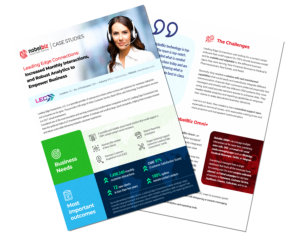
Industry: Business Process Outsourcing (BPOs) / Outsourcing
Company: Leading Edge Connections
Number of Employees: 500+
Product Used: NobelBiz Omni+
Background: Leading Edge Connections, LLC., a leading provider of outsourced contact center services, caters to diverse industries with a comprehensive suite of solutions including Sales, Customer Service, Back Office, and Technology Transformation services. Operating in a 24/7 virtual environment, they sought a contact center software adaptable to their 100% remote business model, scalable across various sectors such as Financial Services, Medical & Pharmaceuticals, Real Estate, and Retail. Additionally, they required robust analytics and reporting capabilities for real-time insights into customer data.
Challenge: Facing suboptimal contact rates and inadequate reporting and analytics, Leading Edge Connections encountered financial strains impacting both their operations and client relationships. This resulted in internal frustrations and discontent among tech and reporting teams, contributing to high attrition rates.
Solution: Embracing NobelBiz Omni+ marked a strategic shift for Leading Edge Connections towards a high-performance tech solution. Equipped with versatile capabilities to support fully remote contact center operations, advanced analytics, and reporting functionalities, Omni+ provided expert guidance in delivering exceptional agent and customer experiences.
Outcome: The adoption of NobelBiz Omni+ resulted in a transformational journey for Leading Edge Connections. With a more empowered and satisfied workforce, they experienced an upsurge in quality interactions monthly, attracting new clients and fostering deeper client satisfaction. The comprehensive solution not only addressed operational challenges but also positioned the company for sustained growth and excellence in customer service delivery.
Implementing Unified CXM
1. Assessing Your Current CXM Strategy:
To embark on the journey of Unified CXM, it’s crucial to first assess your current Customer Experience Management (CXM) strategy thoroughly. This involves conducting a comprehensive audit to identify existing gaps and opportunities.
Begin by mapping out the customer journey, documenting every touch point and interaction across various channels. Evaluate performance metrics to gain insights into customer satisfaction levels, response times, and resolution rates. Identify any existing data silos within your organization that get in the way of a seamless flow of information between departments. Additionally, measure employee sentiment to understand their perspectives on current processes and tools.
2. Key Considerations for Choosing a Unified CXM Solution:
Selecting the right Unified CXM solution is vital for the success of your customer experience initiatives. When evaluating potential solutions, consider several key factors that align with your business objectives and requirements. Integration with existing systems and platforms is a critical consideration, as seamless teamwork is essential for consolidating data and streamlining operations. Look for a solution that offers robust integration capabilities, allowing for smooth connectivity with your current technology stack without disruption.
3. Integration with Existing Systems and Platforms:
Compatibility with your existing systems and platforms is imperative for a seamless transition to Unified CXM. Prioritize solutions that offer flexible integration options, allowing for smooth interoperability with your organization’s CRM, communication tools, and other essential software. Seamless integration will ensure that customer data is synchronized across all channels, which will enable personalized interactions and efficient communication workflows. Additionally, consider the scalability of the integration framework to accommodate future growth and evolving business needs.
4. Training Your Team for a Seamless Transition:
A Unified CXM solution is only as effective as the team that implements and utilizes it. Prioritize training and upskilling initiatives to equip your employees with the necessary skills and knowledge to leverage the new system effectively. Provide comprehensive training programs tailored to different roles and departments, ensuring that each team member understands their responsibilities within the Unified CXM framework. Emphasize the importance of cross-functional collaboration and communication to foster a culture of teamwork and alignment towards delivering exceptional customer experiences.
Challenges and Solutions
- Overcoming Data Silos: Implement data integration strategies to centralize customer data and break down silos between departments.
- Ensuring Data Privacy and Security: Prioritize data privacy and security measures to protect customer information and build trust.
- Managing Change in Organizational Culture: Foster a customer-centric culture within your organization by promoting collaboration and emphasizing the importance of delivering exceptional customer experiences.
- Measuring the Impact of Unified CXM: Use key performance indicators (KPIs) such as customer satisfaction scores, retention rates, and operational metrics to measure the impact of Unified CXM initiatives. Continuously monitor and analyze data to track progress and make informed decisions.
Best Practices in CXM
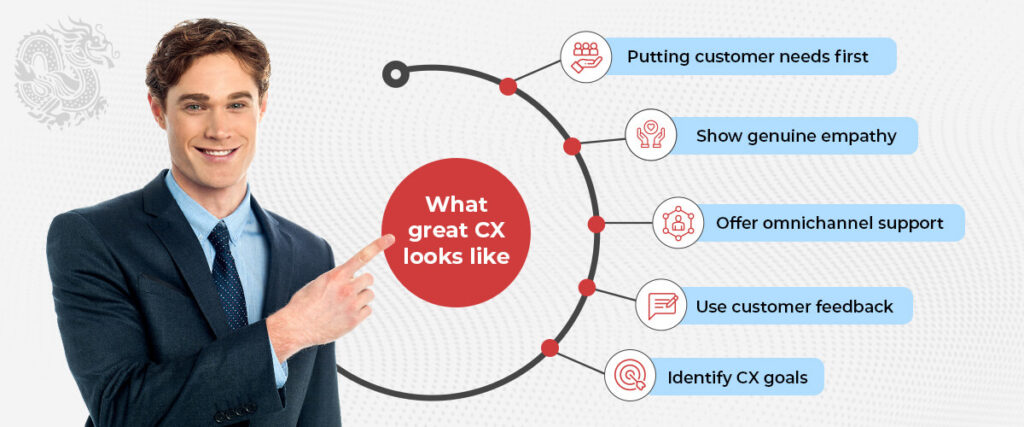
Tips for Maintaining a Strong Unified CXM Strategy:
Foster Cross-Departmental Collaboration:
Encourage collaboration between departments involved in CXM, including marketing, sales, customer service, and IT. Aligning goals and sharing insights across teams fosters a cohesive approach to delivering unified customer experiences.
Regularly Review and Update Customer Journey Maps:
Customer journey maps provide valuable insights into customer interactions and pain points. Regularly review and update these maps to ensure they reflect evolving customer behaviors and preferences, enabling you to adapt your CXM strategy accordingly.
Emphasize Data Quality and Governance:
Ensure data accuracy, consistency, and security across all customer channels. Implement robust data governance policies and procedures to maintain data integrity and compliance with regulatory requirements.
Leveraging AI and Machine Learning for Enhanced CXM:
Personalize Customer Interactions:
Utilize AI and machine learning algorithms to analyze customer data and deliver personalized experiences. Leveraging predictive analytics to anticipate customer needs and preferences will enable you to tailor interactions and recommendations accordingly.
Implement Chatbots and Virtual Assistants:
Deploy AI-powered chatbots and virtual assistants to provide instant support and assistance to customers across multiple channels. Chatbots can handle routine inquiries, freeing up human agents to focus on more complex issues, while virtual assistants offer personalized recommendations and guidance.
Analyze Customer Sentiment:
Use sentiment analysis algorithms to analyze customer feedback and social media interactions in real-time. By understanding customer sentiment, you can identify emerging trends, address potential issues proactively, and enhance overall CXM strategies.
Continuous Improvement and Adaptation:
Solicit Customer Feedback:
Regularly collect feedback from customers through surveys, reviews, and social media interactions. Use this feedback to identify areas for improvement and prioritize initiatives that align with customer preferences and expectations.
Monitor Key Performance Indicators (KPIs):
Track relevant KPIs such as customer satisfaction scores, Net Promoter Score (NPS), and first contact resolution rates to measure the effectiveness of your CXM efforts. Continuously monitor these metrics to identify trends and areas for optimization.
Stay Agile and Flexible:
Be open to experimentation and innovation, and be willing to pivot your CXM strategy based on evolving customer needs and market dynamics.
Conclusion
Unified Customer Experience Management has already significantly reshaped the way businesses engage with their customers in the digital age. By smart integrations and data insights Unified CXM enables companies to build lasting relationships and stay ahead of the competition. Unified CXM involves creating seamless and personalized interactions across all customer touch points.
Key components include data integration, omni-channel support, and real-time analytics. Unified CXM differs from traditional CXM by offering cohesive communication, seamless transitions, and personalized interactions.
The benefits of Unified CXM include enhanced customer satisfaction, streamlined communication, and increased operational efficiency. Implementing Unified CXM requires assessing current strategies, choosing the right solution, overcoming challenges, and measuring impact. The future of customer experience management lies in embracing Unified CXM and prioritizing customer-centric strategies.

Michael McGuire is a contact center industry expert with almost two decades of experience in the space. His experience includes roles as Director of Contact Center Digital Transformation at NobelBiz, and as Director of Operations at FLS Connect, managing multiple call centers. As President of Anomaly Squared and Targeted Metrics, Michael successfully transitioned companies into remote operations and significantly boosted revenues. With a strong background in customer service, leadership, strategic planning, and operations management, Michael excels in driving growth and innovation in the call center space.
Mike is also a proud Board Member for R.E.A.C.H Trade Group, promoting consumer protection and satisfaction and Co-host of the Off Skripted Podcast – a show about Life, Call Centers and everything in between.


 English
English French
French